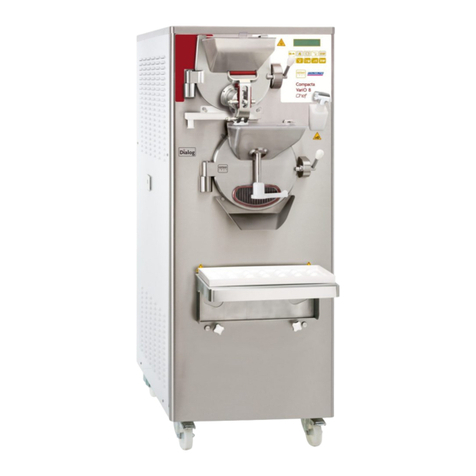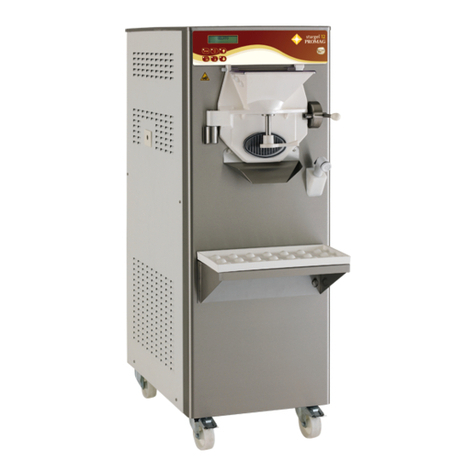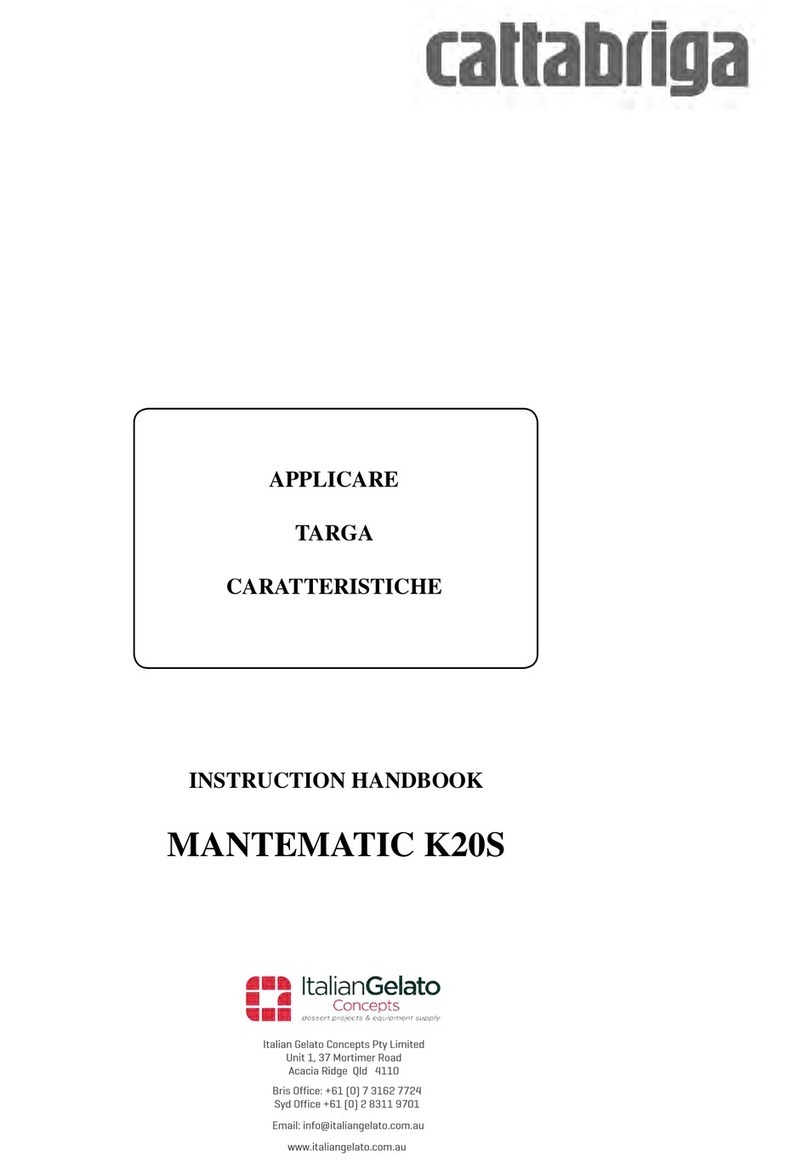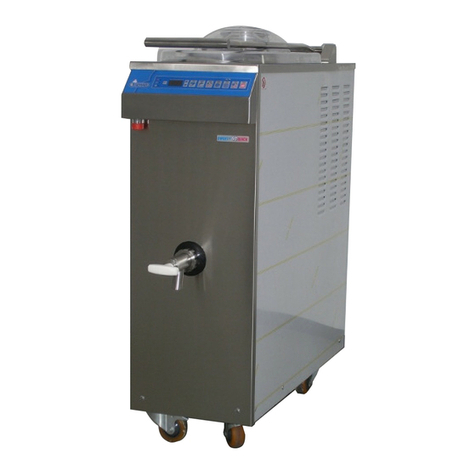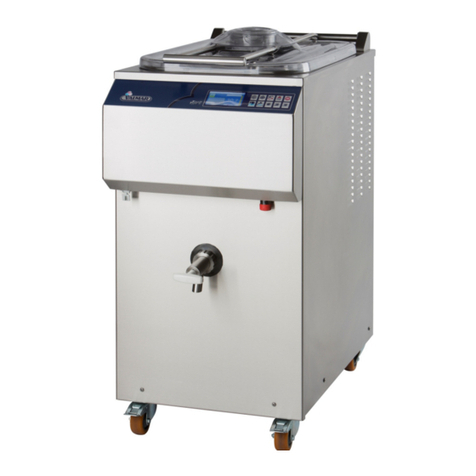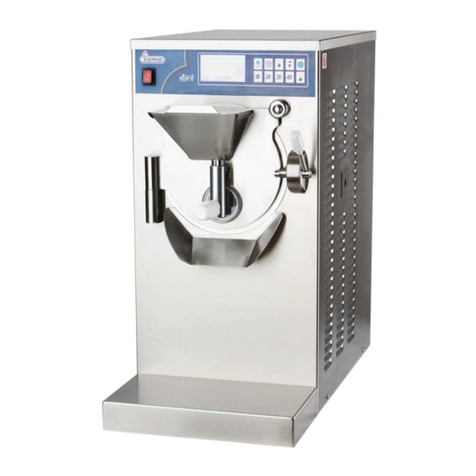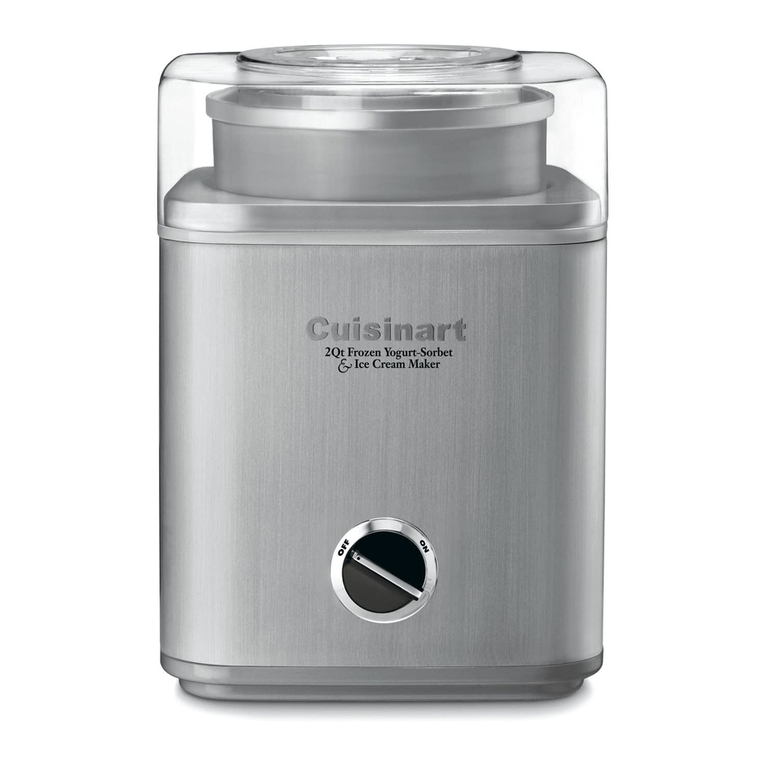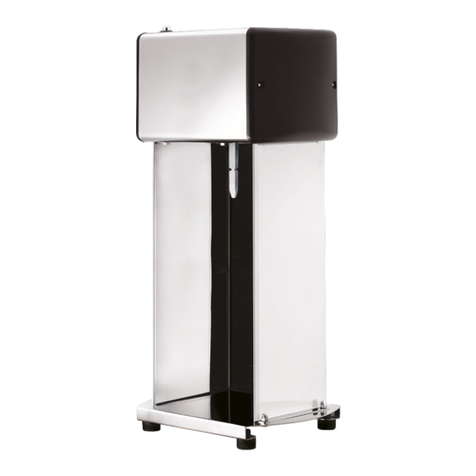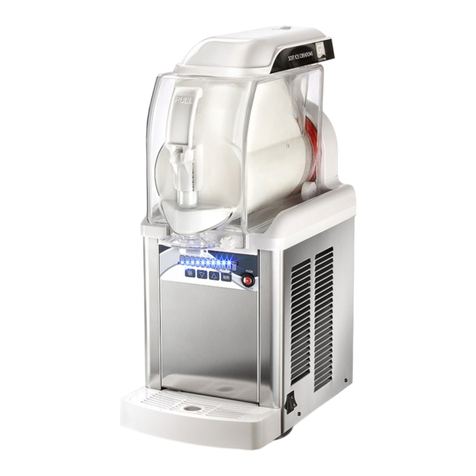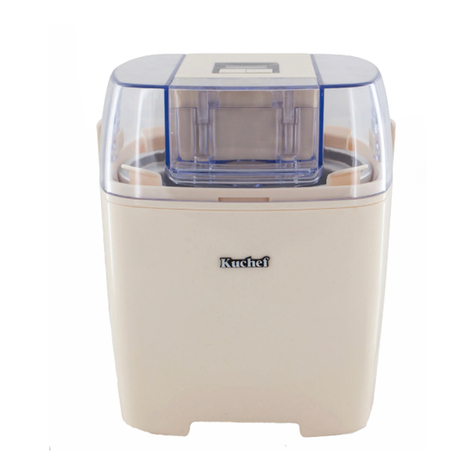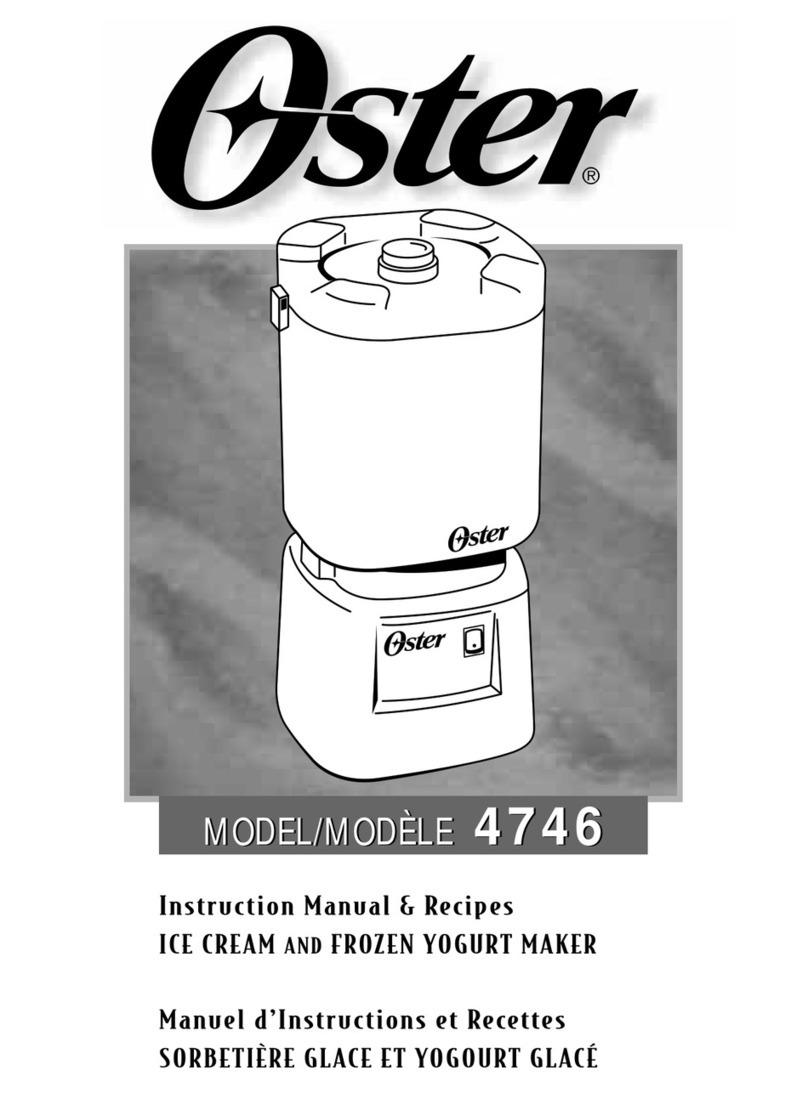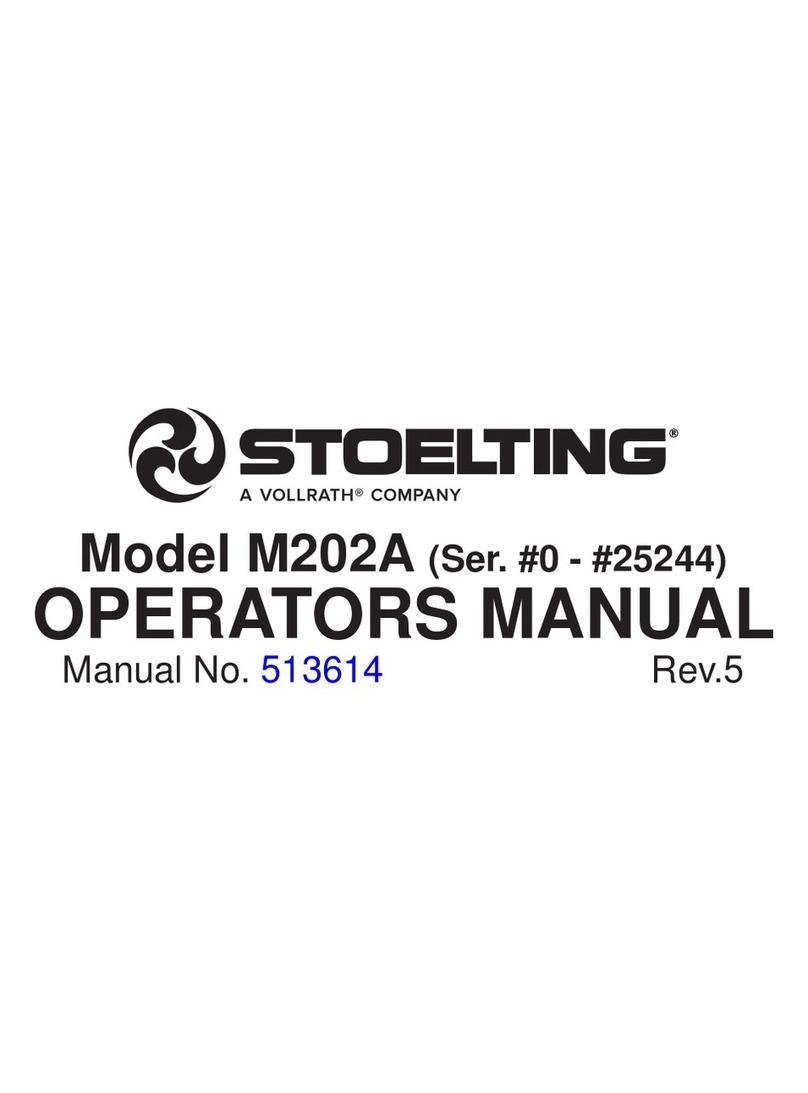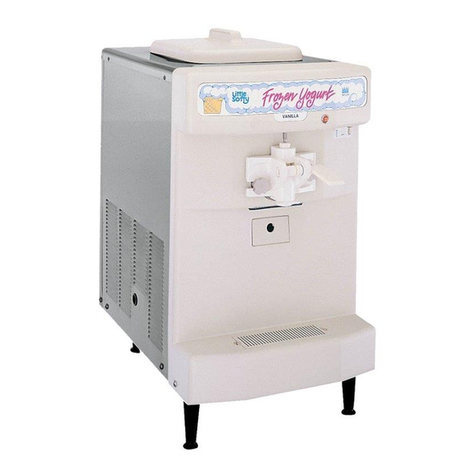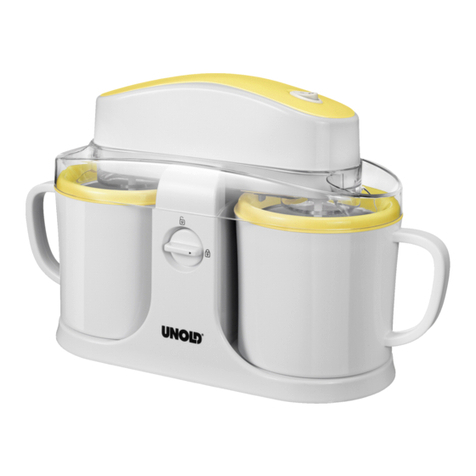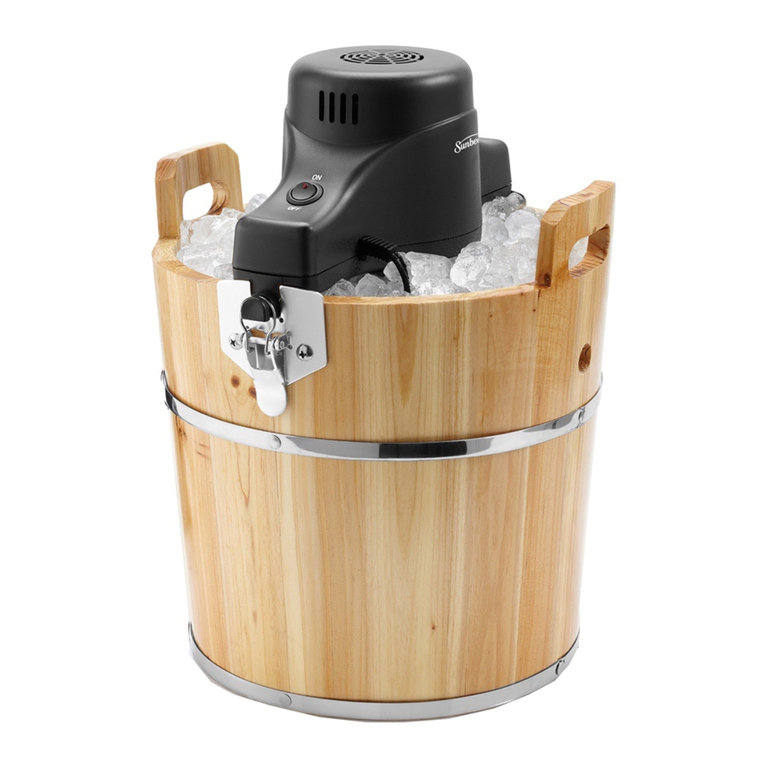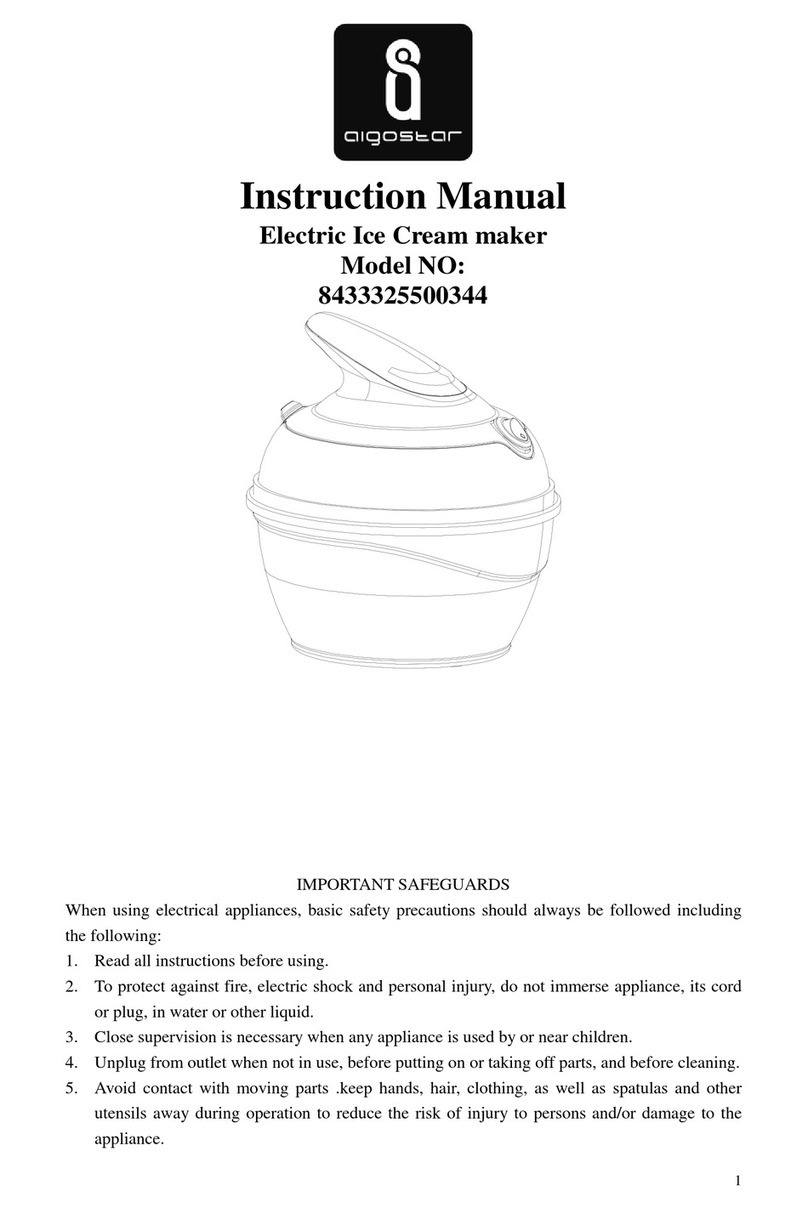
TABLE OF CONTENTS
1
INSTRUCTIONS ON HOW TO USE THE GUIDE ...................................... 7
1.1
SYMBOLS USED IN THE GUIDE........................................................ 7
2
GENERAL FEATURES AND SPECIFICATIONS....................................... 8
2.1
GENERAL FEATURES........................................................................ 8
2.2
IDENTIFICATION OF THE APPLIANCE ........................................... 10
2.3
TECHNICAL SPECIFICATIONS........................................................ 11
3
TRANSPORTATION AND PLACING OF THE APPLIANCE ................... 12
3.1
INSTRUCTIONS FOR PREVENTING INJURIES .............................. 12
3.2
UNLOADING THE APPLIANCE FROM THE LORRY........................ 12
3.3
UNPACKING OF THE APPLIANCE................................................... 13
3.4
PLACING THE APPLIANCE ON THE GROUND............................... 13
4
REQUIREMENTS AND CONDITIONS FOR NORMAL OPERATION OF
THE APPLIANCE ............................................................................................ 14
4.1
ENVIRONMENTAL CONDITIONS..................................................... 14
4.2
WATER SUPPLY REQUIREMENTS ................................................. 14
4.3
ELECTRICITY SUPPLY REQUIREMENTS....................................... 15
5
CONNECTING THE APPLIANCE ............................................................ 16
5.1
INSTRUCTIONS FOR PREVENTION OF INJURIES ........................ 16
5.2
CONNECTING THE APPLIANCE TO THE WATER SUPPLY........... 16
5.3
CONNECTING THE APPLIANCE TO THE POWER SUPPLY .......... 17
6
OPERATING THE APPLIANCE ............................................................... 18
7
CONTROL BOARD .................................................................................. 19
7.1
TOUCH SCREEN (dual inactive home screen) ................................. 19
7.2
PUSH-BUTTON PANEL (TREATING – HEATING) ........................... 49
7.3
PUSH-BUTTON PANEL (PRODUCTION – COOLING)..................... 53
7.4
FIRST USING OF THE MACHINE..................................................... 61
7.5
LANGUAGE SELECTION.................................................................. 62
7.6
DATA DOWNLOAD ........................................................................... 63
7.7
UPDATE OF NEW PROGRAM OR NEW DATABASE ...................... 71
7.8
WEAR OF THE SCRAPERS ............................................................. 72
8
PROGRAMS ............................................................................................. 73
9
MENU PROGRAMS.................................................................................. 74
9.1
MENU PROGRAMS of the HEATING PART ..................................... 74
9.2
MENU PROGRAMS of the COOLING PART..................................... 80
10
CHANGING PARAMETERS OF MACHINE ............................................. 87
10.1
CHANGING PARAMETERS (cooking part) ....................................... 87
10.2
CHANGING PARAMETERS (cooling part) ........................................ 93
11
PROTECTION OF THE USER AND OF THE MACHINE ......................... 99
11.1
PROTECTION OF THE USER........................................................... 99
11.2
ELECTRICAL OVERLOAD PROTECTION........................................ 99
11.3
THERMIC SAFETY DEVICES ........................................................... 99
11.4
PROTECTION OF THE COOLING SYSTEM .................................... 99
12
USE OF THE APPLIANCE ..................................................................... 100
12.1
INSTRUCTIONS FOR THE PREVENTION OF INJURIES .............. 100
12.2
BASIC RULES FOR OPERATING THE APPLIANCE...................... 101
12.3
COVER OF THE KETTLE................................................................ 102
12.4
OUTLET VALVE .............................................................................. 102
12.5
PROCESSING CYLINDER DOOR .................................................. 103

